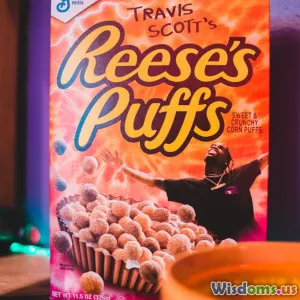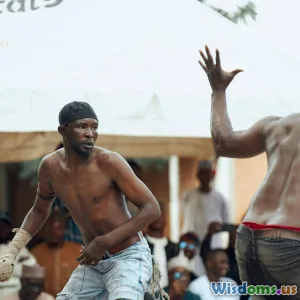
Secrets Designers Wish You Knew About Celebrity Endorsements
13 min read Unveiling the untold truths behind celebrity endorsements, this article explores the strategic and design secrets fueling those iconic brand partnerships. (0 Reviews)
Secrets Designers Wish You Knew About Celebrity Endorsements
The red carpet glam, the billboards ablaze with familiar faces, the instant trust you feel when you see your favorite star touting a product—celebrity endorsements are everywhere. But behind the sparkle and sales pitch, designers are quietly working their magic, shaping every element with a precision few realize. What are the secrets these creative masterminds wish you knew about those headline-worthy partnerships? It's time to peel back the curtain.
Introduction: Beyond the Glamor—The Designers' Crucial Role
When you see a famous actor swaying in a luxurious car commercial, or a singer clutching a new perfume bottle, your eyes are feasting on a collaboration between celebrity—and creator. The design team’s decisions don’t just amplify brand image: they can make or break an endorsement’s credibility, resonance, and ROI. Yet, these vital contributors rarely receive the spotlight they deserve, and most viewers never suspect the intense strategy, debate, and artistry at play.
Curious how a simple snapshot becomes style-defining, or how Instagram trends are born at the intersection of fame and design? Here’s what designers long to share about the captivating, high-stakes world of celebrity endorsements.
The Anatomy of a Perfect Match: Synergy Isn’t Accidental
Understanding the Brand-Celebrity Fit
The best celebrity endorsements seem effortless. Yet orchestrating such synergy takes far more than picking an A-lister. Designers analyze:
- Brand identity vs. celebrity persona: Is the celebrity’s reputation aligned with the product ethos? For example, when David Beckham became the face of Tudor watches, it wasn't just about his fame but his embodiment of the brand’s “Born To Dare” motto. Designers evaluated how his adventurous image, style, and career arc harmonized with Tudor’s aspirations.
- Target audience overlap: A younger fan base for Billie Eilish influenced Nike collaborations—her singular style is immediately visual and speaks to both her and Nike’s target demographics. Designers leveraged this to develop the products and advertisements that captivated social feeds.
The Risks Designers Manage
Designers constantly stress over “mismatch nightmares.” The 2008 campaign with Madonna for Louis Vuitton, for example, had luxury traditionalists scratching their heads. As a design risk, it pushed the boundaries, sparking conversation but also confusion among core Loyals. “A bad fit can dilute a brand fast,” confides luxury designer Gwen Carleton. “We do so much background work, storyboarding, and persona-building to avoid costly mistakes.”
Subtle Storytelling: Design’s Power in Meaningful Messaging
Visual Storytelling Goes Far Beyond Looks
Consumers often recall a clever pose, the twinkle in a star’s eye, or a bold campaign color. But every detail is deliberate:
- Setting: In Beyoncé’s 2017 Ivy Park x Adidas launch, designers created stark, athletic backgrounds against rich, urban colors, emphasizing empowerment and energy—the campaign’s narrative, visually evoked.
- Wardrobe & Styling: Take Zendaya’s campaign with Valentino. Stripped-back styling and minimalist graphics allowed her charisma, rather than clutter, to define “unapologetic glamour,” positioning the brand as both edgy and classic.
- Product Integration: When George Clooney sips Nespresso, the entire scene is designed for subtle product emphasis (notice the mug always at center, never obscured by his hands), ensuring both star and object shine.
Emotional Resonance
Design teams are masters of psychology by proxy. They tap into nostalgia, rebellion, or aspiration based on the talent and target market. Apple’s ongoing roster—Taylor Swift snapping selfies on an iPhone, or Oprah using an iPad—doesn’t just demonstrate product use, but engenders emotional buy-in anchored in trust and familiarity.
The Hidden Influence of Authenticity (and How Designers Stage It)
Why Authenticity is a Double-Edged Sword
Today’s consumers have finely tuned “BS meters”—a forced partnership reads as stiff and unnatural. Designers bear the challenge of making every campaign feel real, even when every moment is meticulously staged.
- Behind-the-scenes moments: Designers increasingly coax unscripted laughter or off-the-cuff gestures from celebrities to convey authenticity. The Calvin Klein “My Calvins” series, featuring ordinary, informal shots of models and musicians, set a new bar for casual cool.
- Storytelling That Feels Genuine: Instead of just photos, designers create vignettes, micro-videos, and testimonials to tell a true-to-life story (think Ryan Reynolds mixing humor and self-deprecation in Aviation Gin ads—a campaign where designers worked closely to let his comedic voice stay front and center).
When Authenticity Fails
2017’s controversial Pepsi ad featuring Kendall Jenner, intended to channel “cultural harmony,” became a viral disaster. Many pointed not just to marketing missteps, but also to design choices—lack of context, shallow symbolism, and visual disconnect. Designers are painfully aware: when authenticity is only skin-deep, consumers will notice and react, sometimes dramatically.
The Unseen Costs: Budgets, Time, and Creative Tensions
High-Stakes, High-Pressure Collaboration
Celebrity deals drain significant resources, and much of this tension lands on design teams.
- Budgets: Hiring a star is expensive, but the behind-the-scenes investments are less visible. Ever notice how a campaign looks like it’s from another world? Custom sets, lighting, wardrobe, and even on-call emergency stylists can inflate costs. Forbes estimates that for every $1 million spent on talent, an additional $500,000–$2 million is invested in design and execution.
- Time Crunches: Celebrities’ time is precious (sometimes mere hours on set), pushing designers into rushed sprints. “We often build backup looks, sets, and lighting scenarios, then pivot on the spot if they veto something,” reveals senior art director Lucas Zhang.
Creative Control (or Lack Thereof)
While designers dream of carte blanche, they often wrangle star egos, agents, branding requirements, and logistics. With some celebrities, like Lady Gaga, involvement is creative and direct. Others may defer to “their own style teams” or challenge the designer’s vision, leading to politically-charged compromises.
Metrics of Success: Beyond Likes and Impressions
Short-Term Buzz vs. Long-Term Loyalty
Designers study past campaigns, experiment with emerging platforms, and dissect data like never before. An endorsement may go viral but create no lasting brand loyalty—or it might spark gradual, meaningful market influence.
- Case Study: Rihanna x Fenty: Early teasers broke Instagram, but designers cite extensive post-launch analysis revealing that thoughtfully crafted content (inclusive visuals, tactile packaging, and Rihanna’s active involvement) was key to building a loyal, repeat customer base over years.
- Monitoring the Metrics: Designers don’t just chase retweets; they pore over conversion data, sentiment analysis, and social listening tools, using these to inform their approach for future campaigns.
Emerging Trends Designers Are Masterminding Now
Micro-Influencers and Niche Authenticity
Not every endorsement is about A-list faces. Many brands—and their design teams—are seeing greater ROI working with micro-influencers whose “realness” appeals in ways that superstar gloss cannot. “We can push design boundaries here that wouldn’t fly with household names—edgier visuals, more experimental storytelling,” says designer Priya Hassan of emerging skincare brand Glossier.
Sustainability and Responsibility
Modern celebrities (and their audiences) increasingly want campaigns to reflect real-world values. Designers are responding:
- Eco-conscious aesthetics: Emma Watson’s partnerships tend to showcase eco-friendly materials and understated elegance. Designers help shape this narrative, from organic backdrops to natural-light photoshoots to digital-first rollouts reducing print waste.
- Cause-driven storytelling: Lizzo’s activewear line Yitty, designed around body positivity, required a new visual language—a feat achieved by putting real fans and everyday moments at the heart of every campaign image rather than relying on traditional studio shots.
Digital and Augmented Reality
Virtual influencers, 3D-rendered backgrounds, and AR-powered social campaigns are turning design into a space of digital spectacle. Designers at Balenciaga, for example, orchestrated a surreal Fall 2021 campaign in a video-game-inspired universe, where digital avatars wore the clothes—blurring celebrity, fantasy, and fashion.
The Pitfalls and Ethical Quandaries Designers Can’t Ignore
Striking the Right Ethical Balance
Rampant Photoshop, cultural insensitivity, and over-sexualization once flew under the radar, but not anymore. Designers now grapple not just with aesthetics, but with what should not be endorsed at all.
Scandals, such as Kim Kardashian’s infamous “appetite suppressant lollipop” Instagram campaign, drew a torrent of criticism—not just at Kim, but also at the design direction of glamorizing questionable products. Designers increasingly collaborate with compliance and ethics teams to rethink what’s sold (and how).
Transparency: Walking the Fine Line
As regulators crack down (like the Federal Trade Commission’s guidelines for disclosure), designers are drafting clearer campaign graphics and digital tags—#ad, “sponsored,” etc.—while still making endorsements visually appealing.
What Does This All Mean for the Next Big Campaign?
Great endorsements are never about slapping a star’s face on a product. Success hinges on a hidden constellation of decisions: every pose, hue, lighting choice, prop, and hashtag tells a story conceived in the design war-room.
So next time you scroll past a gorgeous campaign, remember: somewhere, a team of designers obsessed over every pixel, prop, and possibility, plotting not just your attention—but your heart.
Conclusion: Looking with Designer Eyes
Celebrity endorsements, with their global reach and aspirational power, are more than lucrative alliances—they’re multidisciplinary masterpieces shaped by creators who operate outside the spotlight. Designers are gatekeepers of authenticity, storytellers, risk-managers, and even silent ethicists, reconciling art, commerce, and cultural tides behind the scenes.
For brands and consumers alike, understanding these truths can elevate how we appreciate, critique, or leverage celebrity collaborations. If you’re a marketer, entrepreneur, or burgeoning designer, don’t be awed only by the star. Take note of the silent genius transforming endorsements into icons—and demand the kind of thoughtful, strategic artistry that leaders in this world are quietly, passionately delivering every day.
Rate the Post
User Reviews
Popular Posts




















